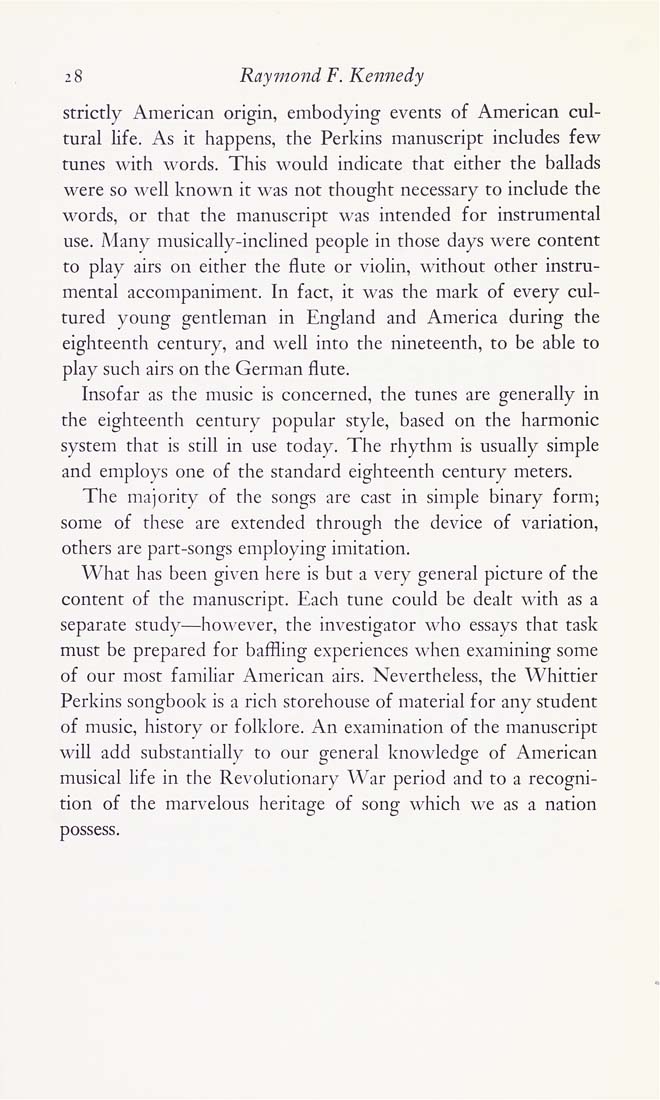Columbia Library columns (v.15(1965Nov-1966May))
(New York : Friends of the Columbia Libraries. )
|
||
|
|
|
|
| v.15,no.3(1966:May): Page 28 |

2 8 Raymond F.Kennedy strictly American origin, embodying events of American cul¬ tural life. As it happens, the Perkins manuscript includes few tunes with words. This would indicate that either the ballads were so well known it was not thought necessary to include the words, or that the manuscript was intended for instrumental use. Many musically-inclined people in those days were content to play airs on either the flute or violin, without other instru¬ mental accompaniment. In fact, it was the mark of every cul¬ tured young gentleman in England and America during the eighteenth century, and well into the nineteenth, to be able to play such airs on the German flute. Insofar as the music is concerned, the tunes are generally in the eighteenth century popular style, based on the harmonic system that is still in use today. The rhythm is usually simple and employs one of the standard eighteenth century meters. The majority of the songs are cast in simple binary form; some of these are extended through the device of variation, others are part-songs employing imitation. What has been given here is but a very general picture of the content of the manuscript. Each tune could be dealt with as a separate study—however, the investigator who essays that task must be prepared for baffling experiences when examining some of our most familiar American airs. Nevertheless, the Whittier Perkins songbook is a rich storehouse of material for any student of music, history or folklore. An examination of the manuscript will add substantially to our general knowledge of American musical life in the Revolutionary War period and to a recogni¬ tion of the marvelous heritage of song which we as a nation possess. |
| v.15,no.3(1966:May): Page 28 |







